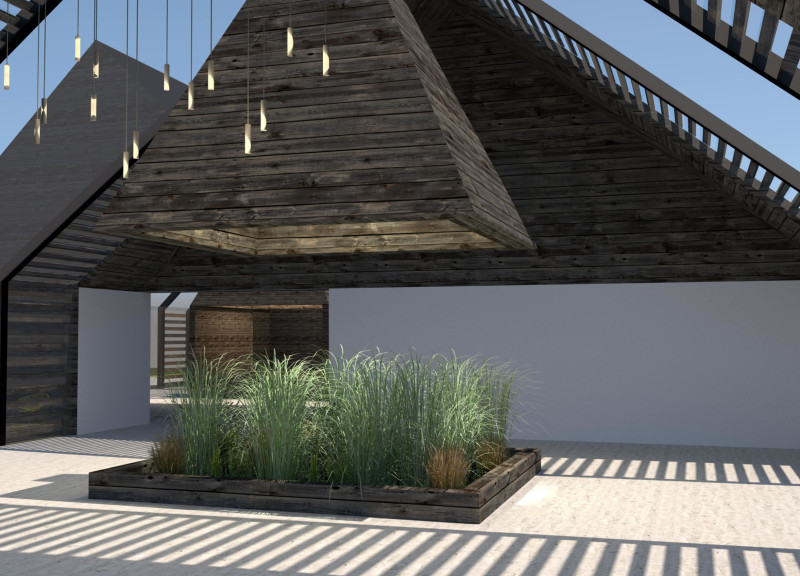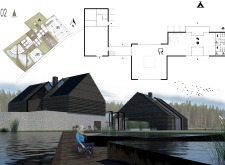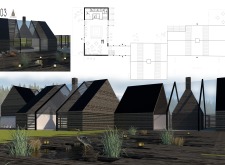5 key facts about this project
The Great Kemeri Bog Visitor Center is located in The Kemeri National Park in Latvia. It focuses on enhancing visitor experiences while encouraging a strong connection to the natural surroundings. The design prioritizes sustainability and accessibility, providing a multifunctional area where guests can learn about the park's unique ecosystem and cultural significance. Drawing inspiration from traditional Latvian wooden architecture, the building blends these elements with modern design practices.
Architectural Concept
The visitor center skillfully combines traditional and contemporary architectural styles. It reflects local building traditions through its proportions and form, while also incorporating modern features that serve functional needs. This mixture creates a distinctive character for the center, establishing it as a welcoming entry point to the park.
Material Usage
Natural materials play a significant role in the construction of the center. The building primarily uses wood and stone sourced from a nearby excavation. Selecting these materials helps strengthen the connection to the local context and follows sustainable building practices. The exterior is adorned with photovoltaic glass, which supports energy efficiency and contributes to the facility's energy supply. This glass is effective at capturing sunlight even on cloudy days while minimizing heat gain during warm weather.
Functional Design
Accessibility is a central feature of the center's design. The layout includes barrier-free pathways that allow all visitors to move through the space with ease. It is organized into several functional areas, referred to as "hearts." These include an information and ticket sales point, an exhibition area showcasing local plants, and a café buffet. This arrangement meets the diverse needs of visitors.
Engagement with Nature
The design extends to the surrounding landscape, creating an engaging environment for visitors. Educational paths have been woven into the outdoors, allowing guests to interact with the park's ecosystem in meaningful ways. This design encourages exploration and invites people to experience the natural landscape through touch, sight, hearing, and smell, deepening their connection to the unique qualities of Kemeri National Park.
Large windows throughout the visitor center provide expansive views of the bog landscape, bringing natural light into the interior and blending the built space with the environment outside. This integration enhances the visitor experience, allowing them to appreciate the beauty of the park from within the structure.






















































